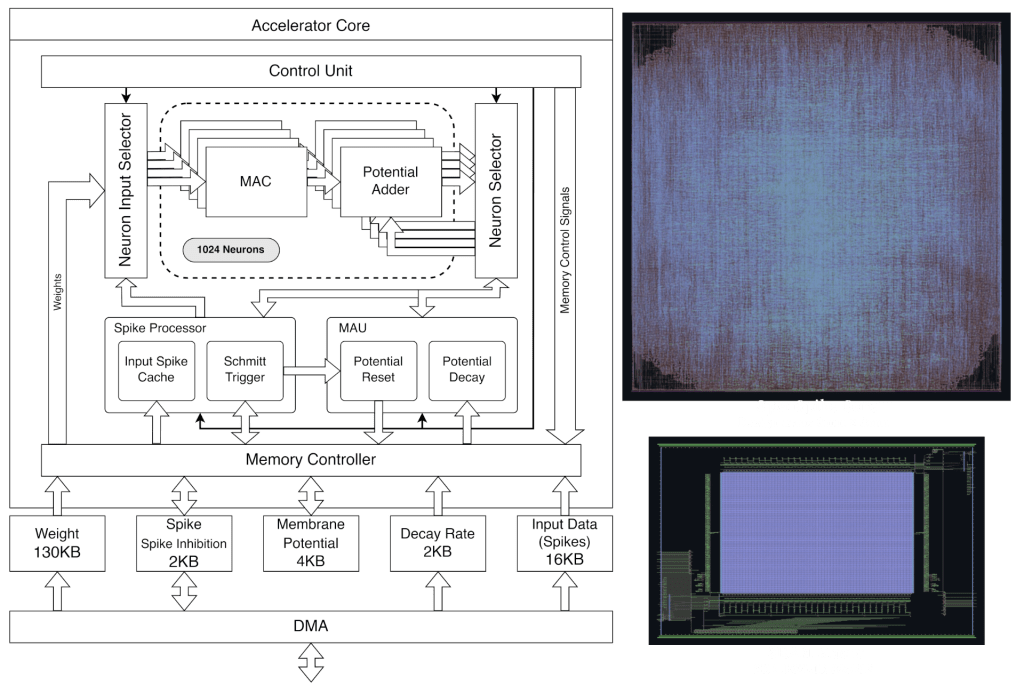BPLC + NOSO has been published, led by Seong Min Jin and Doo Seok Jeong (Jeong Lab), along with collaborators Dohun Kim and Dong Hyung Yoo.
Abstract: For mathematical completeness, we propose an error-backpropagation algorithm based on latency code (BPLC) with spiking neurons conforming to the spike–response model but allowed to spike once at most (NOSOs). BPLC is based on gradients derived without approximation unlike previous temporal code-based error-backpropagation algorithms. The latency code uses the spiking latency (period from the first input spike to spiking) as a measure of neuronal activity. To support the latency code, we introduce a minimum-latency pooling layer that passes the spike of the minimum latency only for a given patch. We also introduce a symmetric dual threshold for spiking (i) to avoid the dead neuron issue and (ii) to confine a potential distribution to the range between the symmetric thresholds. Given that the number of spikes (rather than timesteps) is the major cause of inference delay for digital neuromorphic hardware, NOSONets trained using BPLC likely reduce inference delay significantly. To identify the feasibility of BPLC + NOSO, we trained CNN-based NOSONets on Fashion-MNIST and CIFAR-10. The classification accuracy on CIFAR-10 exceeds the state-of-the-art result from an SNN of the same depth and width by approximately 2%. Additionally, the number of spikes for inference is significantly reduced (by approximately one order of magnitude), highlighting a significant reduction in inference delay.
Paper: https://link.springer.com/article/10.1007/s40747-023-00983-y
Code: https://github.com/dooseokjeong/BPLC-NOSO



